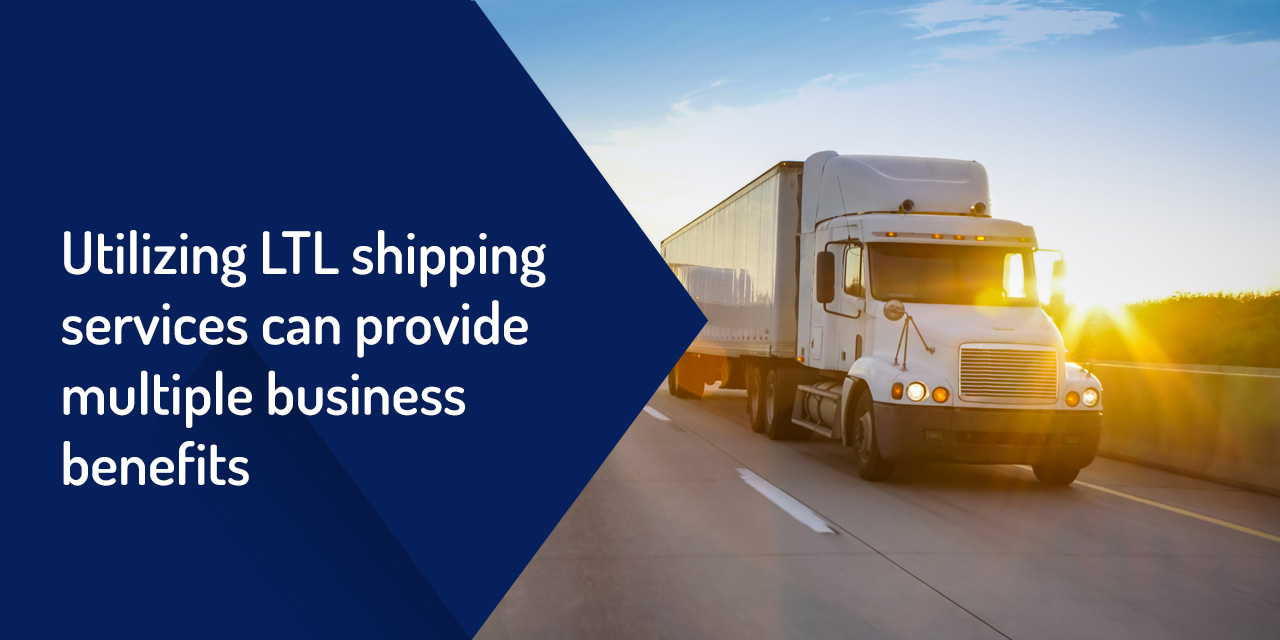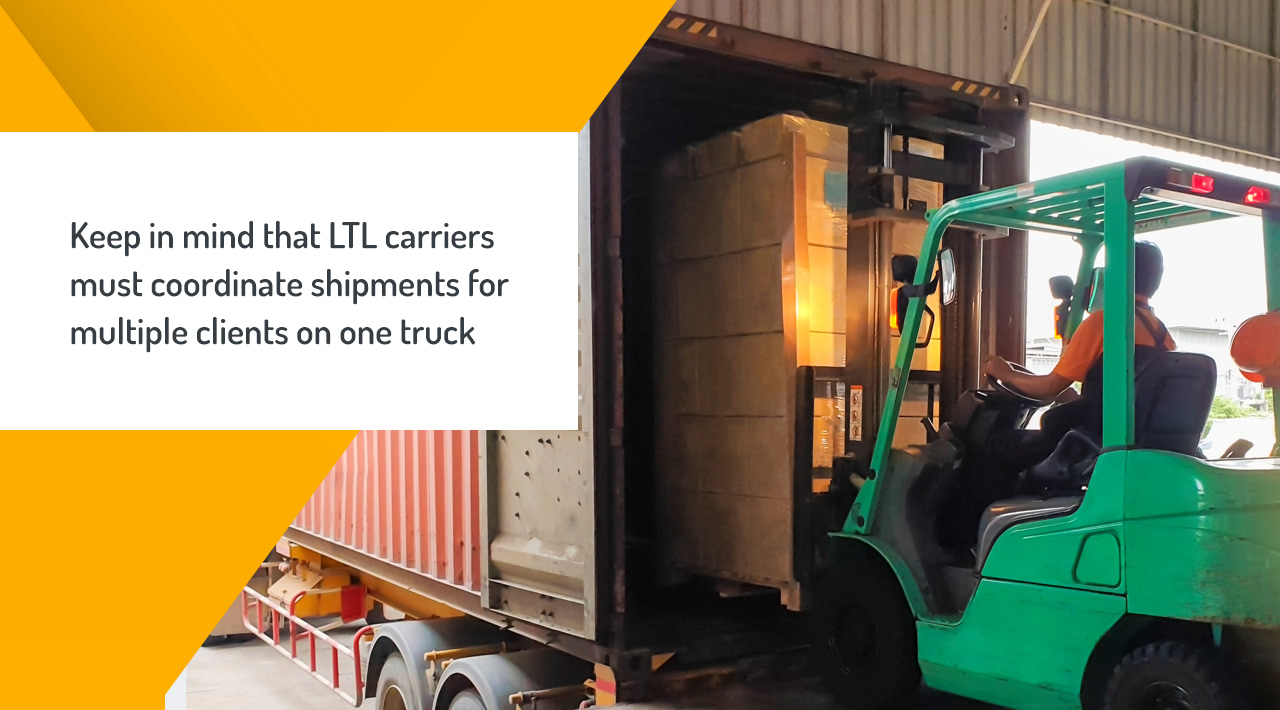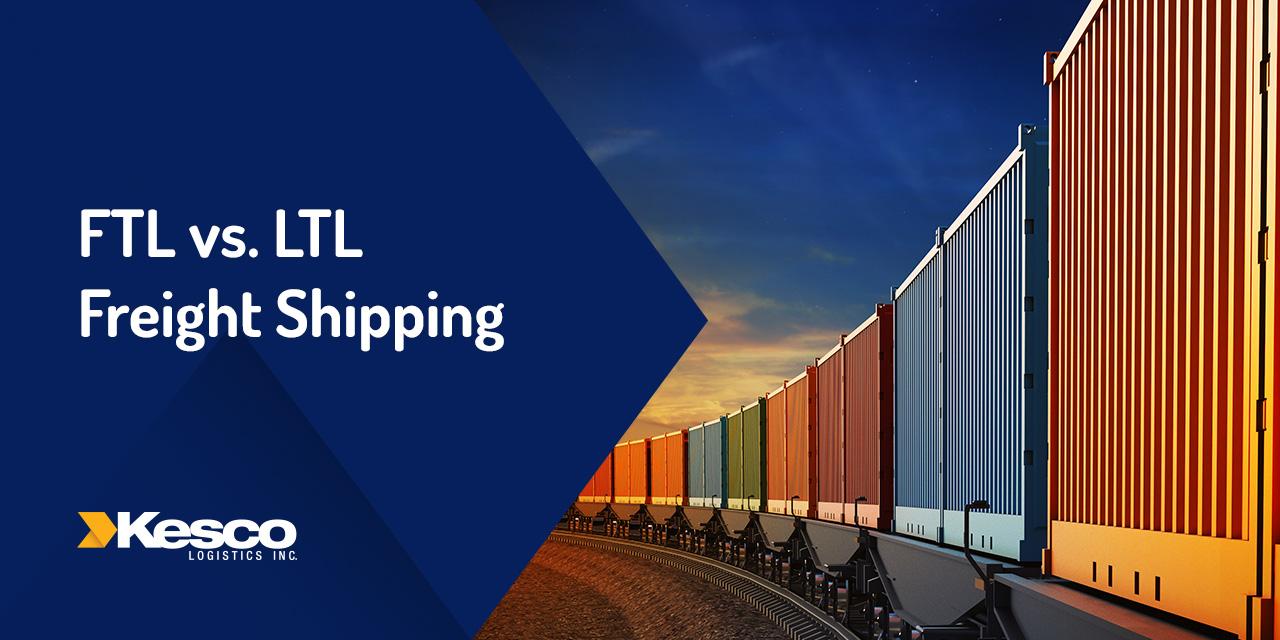Sometimes shippers don’t have enough goods to fill a tractor-trailer. These situations often require companies to pursue an alternate transportation method known as less-than-truckload (LTL) shipping.
LTL shipping entails the transportation of smaller parcels arranged on pallets with a total weight typically ranging from 150 to 10,000 pounds. The transport company combines these loads to produce a full trailer, which makes multiple stops at various locations. LTL haulers specialize in optimizing their loads and routes to ensure the most efficient and cost-effective outcome.
Less-than-truckload freight represents approximately 10% of all for-hire trucking revenue in the U.S. and generated more than $42.1 billion in 2020. The growth of the e-commerce industry in recent years, which generally consists of the sales of smaller products, has contributed to the increase.

10 Benefits of LTL Shipping
Utilizing LTL shipping services can provide multiple business benefits:
- Lower freight costs: Imagine how high your company’s shipping costs would be if you had to hire an entire trailer to haul a partial load. LTL enables you to share the trailer with other shippers, meaning you only pay for the space you use. You’ll incur only a fraction of the cost of a full truckload.
- An assortment of shipping options: Most LTL shipping companies offer multiple service options, enabling you to get a customized solution that meets your needs. Examples include inside pickup or delivery, volume pricing and additional insurance. You can also opt for a liftgate when a load exceeds 100 pounds and the receiving company doesn’t have a dock.
- Viability for smaller companies: Small businesses typically have less demanding shipping needs than large companies. LTL shipping is perfect for these organizations that rarely or never need to fill a trailer with their goods. You can get all the services provided by a professional transport entity at a budget-friendly price.
- Environmental friendliness: Emissions compliance is a primary consideration these days. By combining loads, the less-than-truckload freight method reduces the number of trips and requires fewer trucks to get the job done. The result is less diesel exhaust expelled into the atmosphere. Sharing space also reduces your company’s carbon footprint.
- Lower storage costs: LTL prevents businesses from having to stockpile goods or products in their warehouses. You can send shipments more frequently, gaining additional storage space and reducing inventory expenses.
- Better customer service: Many manufacturers and distributors focus on shipping to end users that only need or can accommodate smaller loads. LTL shipping provides a convenient solution for serving these entities.
- Reduced damage: Because the freight hauler typically packages the loads onto pallets before the trip, there’s less chance that goods will shift or topple during transit, significantly lowering the likelihood of damage.
- Access to support: If damage to goods during shipping does occur, you can typically expect the LTL shipper to assist you when resolving the issue. The shipper can also provide information on filing an insurance claim to help recover your losses.
- Easy tracking: The LTL industry has an excellent reputation for clear visibility and transparency during the shipping process. You’ll know the location of your goods at all times, and you can even trace shipments via your mobile device.
- Professional expertise: An experienced, reputable LTL company can remove the entire shipping burden from your shoulders, providing more peace of mind and enabling you to focus on other areas of your business operations.
What Are the Challenges of LTL Shipping?
While less-than-truckload shipping can provide an excellent transportation solution for many companies, some potential drawbacks exist. For example, because the truck is carrying goods for multiple clients, it will likely make several delivery stops during the trip. You may need to push back the arrival times when planning shipments and keep your customers in the loop to ensure they know what to expect.
Coordinating multiple loads can also pose logistical challenges. The process is heavily detail-oriented and requires close attention to areas such as pickup and delivery locations, load weight, freight class and deadlines. It’s crucial to evaluate several carriers and choose one with a proven track record for meeting expectations.

Another possible obstacle is the lack of availability of LTL shippers in your area. Ideally, you’ll have multiple options to explore when choosing a carrier, but this isn’t always the case. Not every freight company offers LTL shipping services. The ongoing driver shortage can also make it a challenge for carriers to staff routes. According to American Trucking Association estimates, there was a shortfall of approximately 80,000 drivers in 2021, and the number could reach 160,00 by 2030.
Less-Than-Truckload Freight Best Practices
Companies that utilize LTL shipping should follow these steps to optimize their results and avoid potentially costly mistakes.
1. Provide Accurate Load Information
Keep in mind that LTL carriers must coordinate shipments for multiple clients on one truck. The more accurate and precise information you provide regarding freight class, weight and other parameters, the easier you’ll make things for the shipper. Packaging and palletizing the load properly also saves time and reduces the risk of damage.
2. Plan Ahead When Possible
Advanced planning enables the LTL carrier to prioritize your freight and prevents you from paying the higher rates that often result from last-minute shipping. You’re also more likely to avoid the impact of the capacity crunch that can fluctuate due to driver shortages, peak seasons and other factors.
3. Utilize Online Tools When Available
Consider partnering with an LTL carrier that offers access to digital tools for obtaining quotes, generating bills of lading, tracking loads and other valuable functions. These features can streamline and simplify your company’s freight management processes, which can save time, increase accuracy and reduce expenses.

4. Get Familiar With the Tariff Structure
The National Motor Freight Classification (NMFC) standard consists of 18 classes to provide a comparison of freight commodities based on density, liability, stowing and handling. Understanding these factors enables companies to negotiate more favorable rates and avoid unexpected costs.
Should You Ship LTL? Contact Kesco Logistics to Learn More
If you’re still unsure if LTL shipping will work for your business, Kesco Logistics can help. Our array of premium freight forwarding services includes expert less-than-truckload shipping to accommodate your smaller loads. With more than 30 years of experience, we’ll ensure the most comprehensive and cost-effective transportation results for your business.
When you partner with us, you’ll get LTL shipping with a personal touch. We don’t believe in offering cookie-cutter solutions — we’ll collaborate with you to develop and implement a tailor-made logistics program. We’re also here to guide you through the supply chain process.
Contact Kesco Logistics today to learn more about the advantages of our LTL shipping services.



